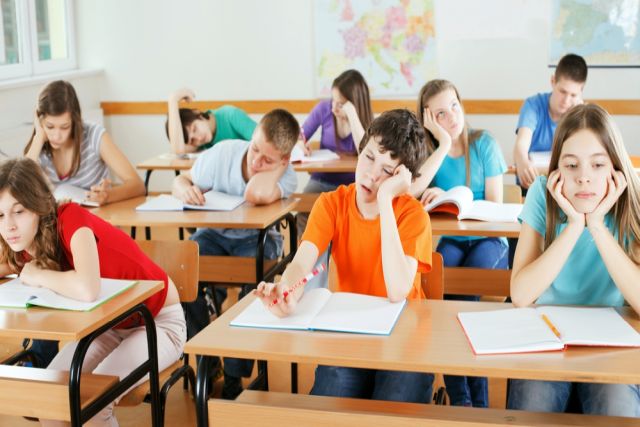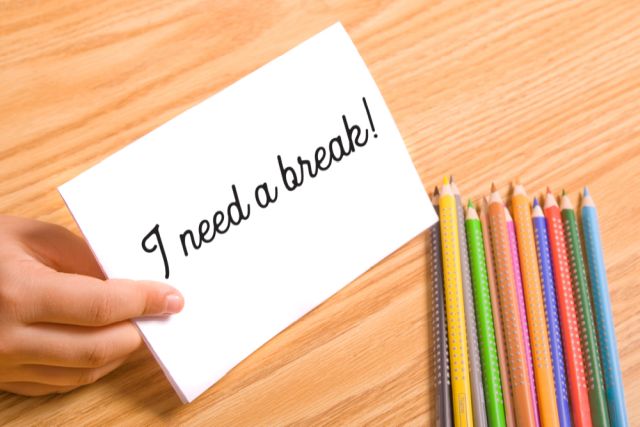Help for School and Kindy
5 Ways Movement Breaks in the Classroom Help With Behaviour
Teachers, how much physical activity do your students get every day? Does your school incorporate brain breaks in the classroom?
Have you heard about the fun ways that teachers at forward-thinking schools are incorporating exercises into their daily routine? And these are exercises that are typically associated with occupational therapy!
Gone are the days of classrooms arranged with desks in single file. Now, the trend in classroom arrangement is different. Today’s classroom setup prefers group learning tables, themed stations around the room, and even unique seating options.
Plus, teachers are looking for more and more ways to incorporate much-needed physical activity into their students’ day.

An unexpected side-benefit of movement breaks in the classroom
What may have started as a reaction to inclusive options for children with special learning needs, is now gaining a foothold as standard practice.
Brain breaks in the classroom – the whole classroom – seem to be the answer. In fact, the long-awaited answer to the concern of today’s sedentary, screen-addicted youth.
It has long been understood in special needs classes and occupational therapy offices that movement breaks are immensely valuable.
Movement breaks in the classroom give children with SPD, ADHD, anxiety, dyspraxia, and other classroom challenges, such as fidgeting, poor concentration and day dreaming, a much-needed opportunity to reset throughout the day. What’s more, though, is the benefits of a brain break in class apply to all students.
The benefits of movement breaks in the classroom apply not just to those with special needs. Brain breaks have been shown to help increase concentration and focus.
Furthermore, they’ve been shown to result in an increase the efficacy of learning in general.
5 minutes of movement between lessons can make a huge impact in your student’s attention and behaviour.
Here are 5 ways that movement breaks in the classroom have been shown to benefit students in these settings:
1. Movement breaks make learning more efficient.
Research shows that brain breaks make learning more efficient. Taking 5 minutes to let latent learning take effect allows your previous lesson to sink in.
And, also the following lesson to start fresh. Biologically speaking, the hippocampus of the brain is the region responsible for creating new memories.
Research suggests that the hippocampus functions better at making long-term memories when there are short breaks in between repetitions of new material.
Latent periods seem to strengthen the brain’s ability to commit things to memory. So, taking a break like a movement break is a great way to secure new educational material in class.
2. Physical activity increases oxygen to the brain.
Physical activity also increases oxygen to the brain, which is critical for attention and learning. Biologists suggest that 90% of the oxygen in our body is “stale” – low-quality.
Yet, when we yawn, take deep breaths, or get up and get your body moving, oxygen-rich air circulates throughout our system. This is especially important in our brain for learning!
Focus and ability to remember new material are directly linked to the amount of oxygen in the blood.
3. Movement breaks interrupt negative patterns.
Classroom brain breaks also allow students a chance to regulate or interrupt any anxiety or stress. If you think that our elementary and middle school aged children are too young for anxiety and stress, think again.
We talk about common struggles of starting school.
4. Movement breaks offer a mini break.
Movement breaks offer kids a mental and sensory break. This is particularly critical for students with sensory processing disorder (SPD), ADHD, dyspraxia or other classroom challenges.

5. Self-regulation of emotions have a chance to kick-in.
Plus, they can help with self-regulation of emotions in general. Throughout early childhood, kids are still learning how to manage their behaviour and emotions. Movement breaks for preschoolers does wonders already at an early stage.
Self-regulation is critical for learning and for social interactions. Following directions, sitting still without blurting out or having an emotional outburst at every turn are all correlated with one’s ability to self-regulate.
Exercise in general has a positive effect on emotional regulation of both children and adults. Moreover, the specific exercises used in most class-wide occupational therapy movement breaks target the brain-body connections that aid children in physically being able to regulate their emotions better.
Even just 5 minutes of physical movement between lessons can make a huge impact on any child’s school day, whether they have sensory processing disorder, ADD, ADHD, ASD, dyspraxia or not!
Forward-thinking schools allow movement breaks during the day
Some schools are getting creative with allowing individual brain breaks throughout the day. For example, one mom named Skylee says, “My son’s teacher had little Velcro papers that said, “I Need A Break!” on each child’s desk.
They were allowed to hand it to the teacher to earn few mins to get up and move around when they needed it.”

For example:
- bilateral movements encourage both hemispheres to be active,
- balance and rhythm supports concentration, and
- an auditory component encourages listening.
All in all, in the 5-minute classroom brain breaks, the focus is on body movements, giving the cortex (thinking brain) a break to refresh, and get ready to concentrate.
However, the exercises are fun for all participating children. The exercises get their muscles moving, oxygen flowing to the brain, and require no additional prep time from the teacher.
He or she simply starts one of the online videos, and the class can follow along.
What Types of Movement Breaks in the Classroom are Best?
Did you know that there are certain proven physical exercises to improve concentration for school children?
Research in occupational therapy has led to several programs of this kind.
These are programs that show teachers specific sets of exercises to improve concentration in the classroom. These programs are perfect for a brain break
Proprioception activities in the classroom are types of movement that address any gaps in the awareness of the body in space. These gaps might be ones that are due to dyspraxia, SPD, ASD or several other developmental disabilities.
All children benefit from proprioception activities (sometimes called ‘heavy work’ activities). So, many teachers incorporate these movements into daily portions of lesson plans.
Proprioception Movement Breaks Teachers Can Seamlessly Integrate Into Class
Moving desks and chairs around for different seating throughout the day (more on this later), carrying books, pushing a cart, carrying a stack of lunchboxes, moving mats or gym equipment, stapling and cutting, etc.
Teacher Erica says,
“One thing I do to help with students’ need to move is I have the students do almost everything. They pass out supplies, they sort supplies, they collect supplies. The goal is to always have some movement task for them to do.”
Vestibular stimulation activities target the vestibular system in the inner ear. The vestibular system is one which can be compromised in a wide range of developmental and sensory integration challenges.
The vestibular system is triggered with head movements. Coordination, balance, self-regulation of emotions and focus on tasks can all be strengthened with the practice of vestibular stimulation activities.
A common example is bending over at the waist and straightening back up again. So, anything that moves the head in drastically different directions.
Vestibular Movement Breaks in the Classroom Teachers Can Seamlessly Integrate
Activities that target this system can be easily incorporated through movement learning songs like “Head, Shoulders, Knees and Toes.”
Or:
- create movement breaks for students in which students bend over to pick up popsicle sticks or blocks with numbers and letters to spell words or solve math problems.
- hang a different number in each corner of the room, calling out a simple number problems, and asking the students jump and turn to face the corner with the correct answer.
- simply store stationary under the child’s chair. The child has to bend down to pick up pencils, crayons, erasers, etc.
Check out the movement breaks programs created by the occupational therapists at CoordiKids specifically for teachers like you!
please add me to your mailing list
Hello current teachers, I am studying to become an elementary school classroom teacher and am interested in knowing more about movement breaks. Where can I find reliable resources and how often should I give movement breaks in the classroom? Thank you!